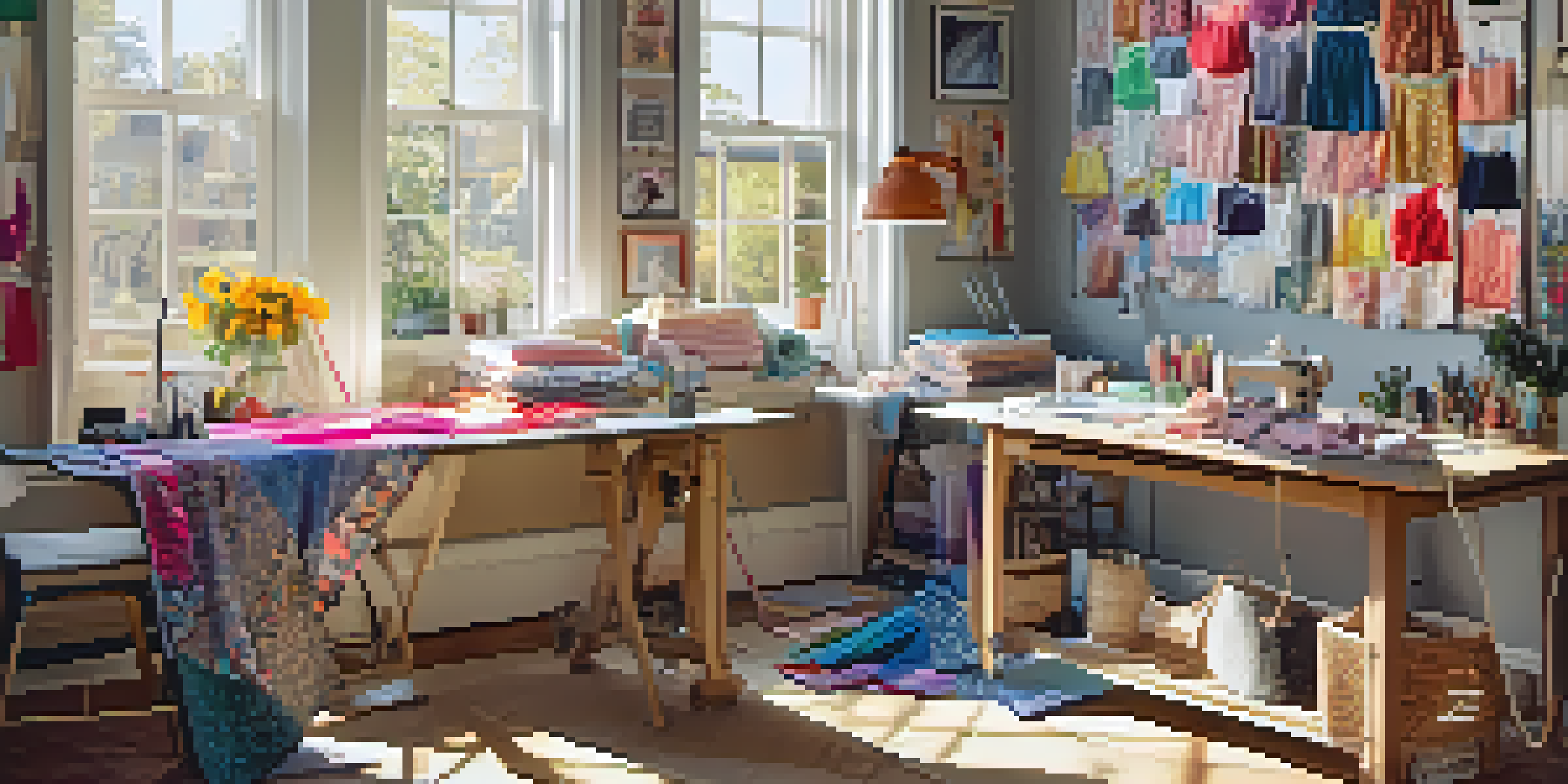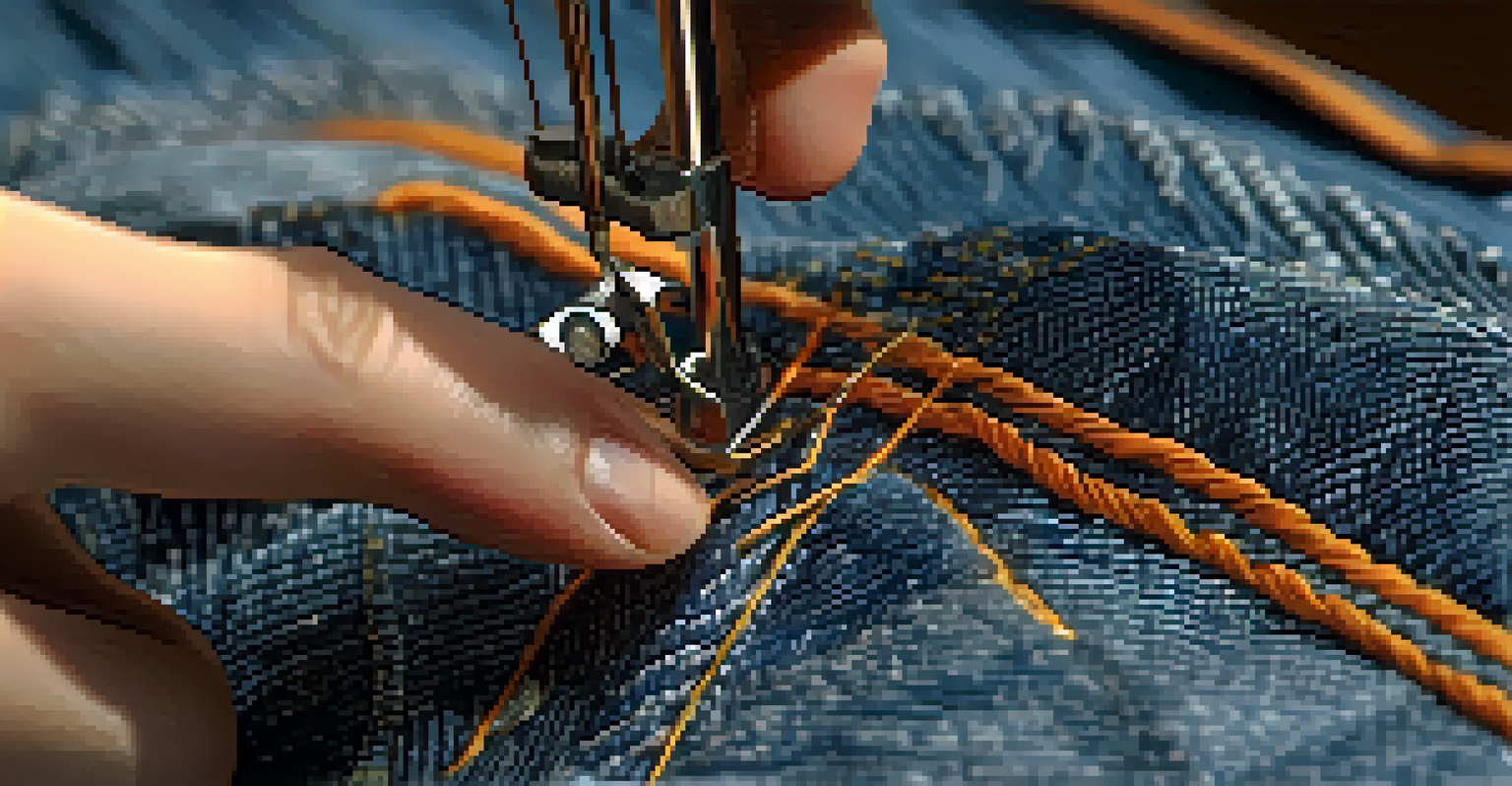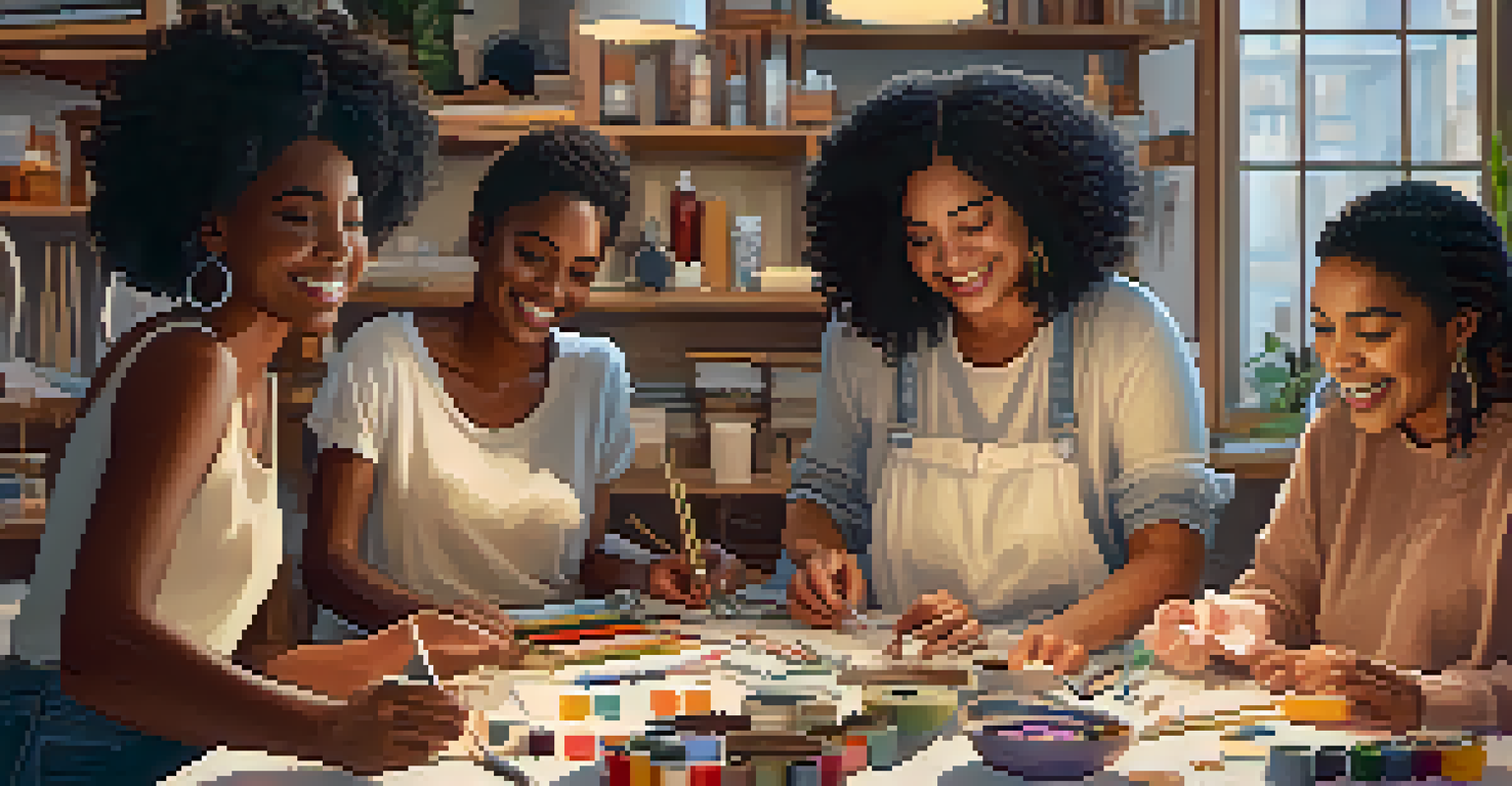Understanding DIY Fashion: A Creative Response to Fast Fashion

The Rise of DIY Fashion in a Fast-Paced World
DIY fashion has emerged as a creative and sustainable response to the overwhelming nature of fast fashion. In a world where clothing is produced at lightning speed, many are turning to their own hands to craft unique pieces that reflect their personal style. This movement encourages individuals to step away from mass-produced garments and embrace their creativity.
Fashion is the armor to survive the reality of everyday life.
As consumers become more aware of the environmental impact of fast fashion, DIY fashion offers a refreshing alternative. Instead of contributing to the cycle of waste and overconsumption, people can repurpose old clothes or create something entirely new. This not only saves money but also fosters a deeper connection to what we wear.
With platforms like Pinterest and Instagram showcasing countless DIY projects, inspiration is just a click away. Whether it’s transforming an old pair of jeans into a trendy bag or creating a one-of-a-kind dress from scratch, the possibilities are endless. This accessibility has made DIY fashion an appealing choice for many.
Understanding the Impact of Fast Fashion
Fast fashion refers to the rapid production of inexpensive clothing, which often leads to significant environmental and ethical concerns. Brands churn out new styles weekly, encouraging consumers to buy more than they need. This results in enormous amounts of textile waste, as many garments end up in landfills after just a few wears.

The fast fashion industry is notorious for its reliance on low-cost labor in developing countries, often leading to exploitation and poor working conditions. By focusing on speed and cost-cutting, many brands prioritize profit over the well-being of workers. This raises ethical questions about our clothing choices and the true cost of our wardrobe.
DIY Fashion: A Sustainable Choice
DIY fashion provides a creative and eco-friendly alternative to fast fashion by encouraging individuals to repurpose and create unique clothing.
As awareness grows, many consumers are starting to seek alternatives that align with their values. This shift has led to an increased interest in sustainable fashion practices, including DIY fashion. By making clothing ourselves or upcycling existing pieces, we take a stand against the harmful practices of the fast fashion industry.
Benefits of Embracing DIY Fashion
Embracing DIY fashion comes with a myriad of benefits that extend beyond just personal style. Firstly, it promotes sustainability by reducing waste and encouraging the use of existing materials. Instead of discarding old clothes, we can breathe new life into them through creativity and resourcefulness.
Sustainability is no longer about doing less harm. It's about doing more good.
Moreover, DIY fashion allows for self-expression like no other. Each piece crafted is a reflection of our unique taste and personality, something that mass-produced clothing simply cannot provide. When we create our own fashion, we tell our story through fabric and design, making our wardrobe truly ours.
Additionally, DIY fashion can also be a rewarding and therapeutic hobby. The process of creating something with our hands can be incredibly fulfilling, offering a break from the digital world. As we immerse ourselves in crafting, we cultivate patience and skill, which can be immensely satisfying.
Getting Started with DIY Fashion: Tips and Tricks
If you're new to the world of DIY fashion, starting can feel a bit daunting. The key is to begin with simple projects that match your skill level. Consider starting with small modifications, such as adding patches to a jacket or altering the hem of a skirt, before diving into more complex creations.
Gathering the right materials is crucial for successful DIY projects. Look around your home for old clothes, fabric scraps, or sewing supplies that you can repurpose. Thrift stores are also treasure troves for unique pieces that can be transformed into something special, often at a fraction of the cost of new clothes.
Community Drives DIY Creativity
Engaging in DIY fashion fosters a supportive community where enthusiasts can share ideas and inspire one another.
Lastly, don’t hesitate to seek out tutorials and community support. There are countless resources online, from video tutorials to DIY blogs, that can guide you through the process. Connecting with others who share your passion can also inspire and motivate you on your DIY journey.
Building a DIY Fashion Community
One of the most rewarding aspects of DIY fashion is the sense of community it fosters. Many individuals who engage in DIY projects often share their creations on social media, inviting others to join in the fun. This sharing creates a supportive environment where ideas and techniques can be exchanged.
Local crafting groups and workshops are also great ways to connect with fellow DIY enthusiasts. These gatherings provide an opportunity to learn from one another and collaborate on projects. There's something truly special about coming together with others who share a passion for creativity and sustainability.
As we build this community, we can amplify the message of sustainable fashion. By supporting one another, we encourage more people to explore DIY options and make conscious choices about their clothing. Together, we can create a movement that values creativity, sustainability, and individuality.
The Future of Fashion: DIY vs. Fast Fashion
As we look to the future of fashion, it’s clear that the DIY movement is gaining momentum. With increasing awareness of the negative impacts of fast fashion, more people are seeking sustainable alternatives that are both eco-friendly and personal. This shift in consumer behavior signals a growing desire for change in the fashion industry.
Fashion brands are also beginning to take notice, with some incorporating sustainable practices into their production processes. However, it’s essential for consumers to remain vigilant and demand transparency from brands. The more we advocate for ethical practices, the more likely companies will respond to our call for change.
Conscious Choices Shape Fashion's Future
The growing interest in DIY fashion signals a shift towards sustainability, urging consumers to demand better practices from brands.
Ultimately, the choice between DIY fashion and fast fashion lies in our hands. By embracing creativity and sustainability, we can pave the way for a fashion landscape that values quality over quantity. Together, we have the power to redefine what fashion means and support a more responsible industry.
Final Thoughts: Why DIY Fashion Matters
In conclusion, DIY fashion is more than just a trend; it’s a movement rooted in creativity, sustainability, and self-expression. As we navigate the complexities of the fashion world, embracing DIY offers a way to make a positive impact. Each piece we create tells a story and reflects our values, making our wardrobes truly unique.
By choosing to engage in DIY fashion, we challenge the status quo of fast fashion and advocate for a more thoughtful approach to clothing consumption. This not only benefits the environment but also empowers us as individuals to take ownership of our style and choices.

As more people join the DIY fashion movement, we can collectively shift the fashion narrative toward sustainability and creativity. So grab your scissors, threads, and imagination—it's time to transform our wardrobes and make a statement that truly represents us.